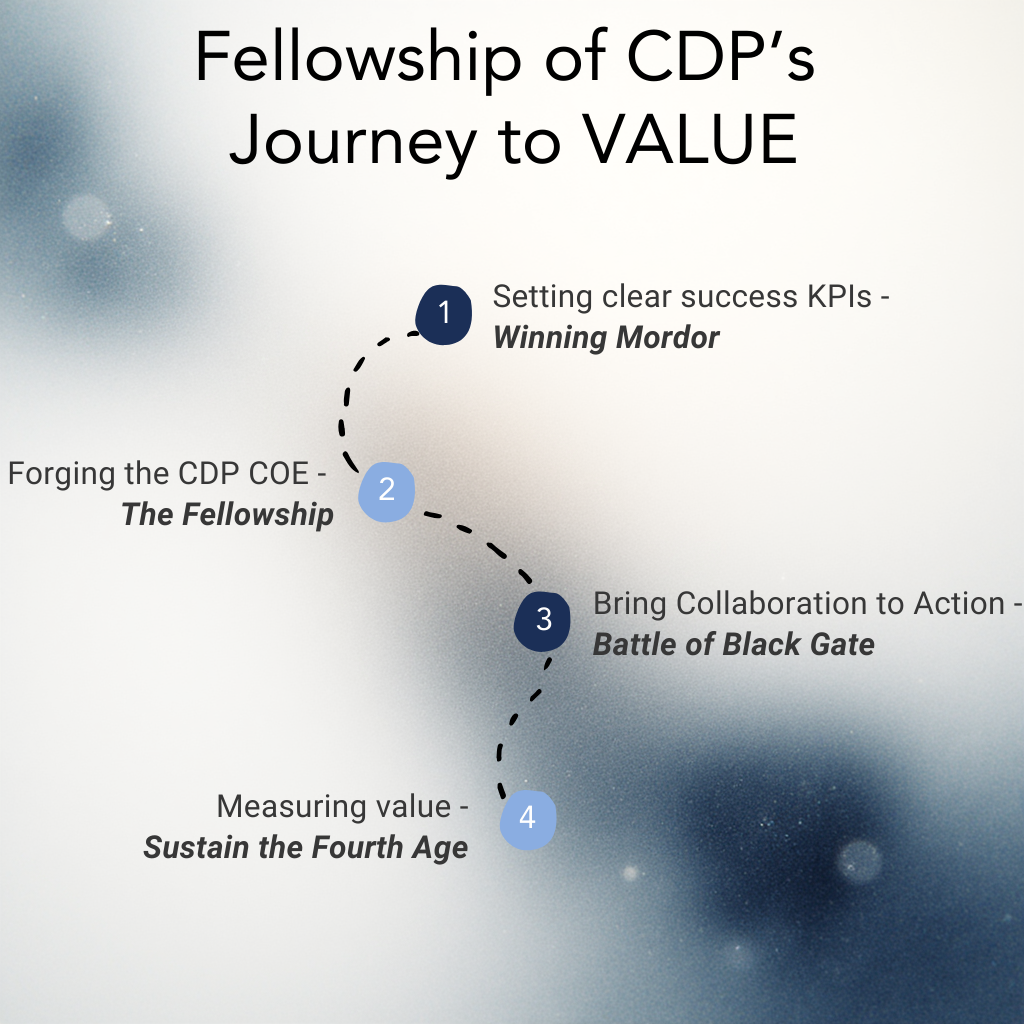Optimising User Experiences with Generative AI: Personalisation and Beyond

In the ever-evolving landscape of technology, artificial intelligence (AI) continues to amaze us with its transformative capabilities. One particularly intriguing aspect of AI is Generative AI, a class of algorithms that possess the remarkable ability to create new and original data instances based on patterns learned from existing data. This powerful technology has opened up new horizons for optimising user experiences across a wide range of applications and industries. From personalised content recommendations to interactive virtual assistants, Generative AI is revolutionising the way we interact with digital systems, enhancing our engagement and satisfaction. In this article, we explore how Generative AI can be harnessed to optimise user experiences, making them more personalised, immersive, and enjoyable.
1. Content Personalisation: Enhancing Relevance and Engagement
One of the primary challenges in the digital era is delivering content that resonates with individual users. Generative AI addresses this challenge by analysing user behaviour, preferences, and historical interactions to create personalised content tailored to each user’s interests and needs. Whether it’s suggesting products, articles, or entertainment content, these AI-powered systems adapt in real-time, ensuring that users receive content that aligns with their unique tastes, leading to higher engagement and user satisfaction.
2. Intuitive User Interfaces (UI) and User Experience (UX) Design
The user interface is the gateway through which users interact with digital products. With Generative AI, designers can now create intuitive and user-friendly interfaces that dynamically adjust based on individual users’ behaviour and interaction patterns. By leveraging generative models, designers can optimise UI elements, layouts, and visual elements, resulting in a seamless and enjoyable user experience.
3. Chatbots and Virtual Assistants: Empathy in AI
Chatbots and virtual assistants have become increasingly common, but truly understanding and responding to human queries is a significant challenge. Generative AI steps in to address this challenge by creating more human-like virtual assistants that can comprehend user queries and provide relevant responses. These empathetic AI entities enhance the user experience by providing personalised assistance and support, driving user engagement and loyalty.
4. Dynamic Website Generation: Personalised Browsing Experience
Static websites are rapidly becoming a thing of the past. Generative AI enables dynamic website generation, allowing websites to adapt and personalise content, layout, and visuals based on each user’s preferences and historical interactions. As users navigate through the site, the content dynamically reshapes, ensuring a captivating and relevant browsing experience that keeps users coming back for more.
5. Gameplay Experience: Tailoring Entertainment
Gaming is all about providing players with an immersive and enjoyable experience. Generative AI takes gaming to the next level by dynamically adjusting gameplay elements, level designs, and challenges based on each player’s skills and preferences. By tailoring the gaming experience to individual players, these AI-enhanced games create a more personalised and rewarding journey for gamers.
6. Personalised Learning: Unlocking Educational Potential
Education is not a one-size-fits-all endeavour. Generative AI can revolutionise the learning experience by generating personalised learning materials and exercises based on individual learning styles and progress. This personalised approach to education fosters a deeper understanding and retention of knowledge, making the learning journey more enjoyable and effective.
7. Healthcare Experience: Empowering Patients and Caregivers
In healthcare, optimising the patient experience is of utmost importance. Generative AI can contribute to this by generating personalised treatment plans, interactive healthcare applications, and virtual health assistants that provide tailored support and information. These AI-driven healthcare experiences empower patients and caregivers, leading to better health outcomes and improved patient satisfaction.
8. Marketing and Advertising: Targeting with Precision
The world of marketing and advertising thrives on understanding and engaging with target audiences effectively. Generative AI enables marketers to optimise their campaigns by generating personalised advertisements and promotional content that resonate with each target audience. By leveraging AI-powered insights, businesses can deliver more relevant and impactful messages, leading to higher conversion rates and customer loyalty.
9. Product Design and Customisation: Catering to Individual Needs
In the realm of product design, Generative AI can be a game-changer. It allows businesses to create and customise products based on individual preferences and requirements. Whether it’s personalised fashion items, interior design, or even custom vehicles, generative models enable businesses to deliver products that are uniquely suited to each customer, fostering a sense of ownership and satisfaction.
10. Virtual and Augmented Reality (VR/AR) Experiences: Immersive and Interactive
Generative AI is transforming VR/AR experiences by creating dynamic and interactive worlds that adapt to user actions and preferences. These AI-powered immersive environments deliver an engaging and personalised experience, capturing users’ imagination and maximising their enjoyment of virtual and augmented reality technologies.
Real-World Examples of Successful Application
Here are some real-life examples of brands that have successfully applied generative AI in Conversion Rate Optimisation and experience optimisation:
Amazon
Amazon uses generative AI algorithms to personalise product recommendations for each user. By analysing user behaviour, purchase history, and browsing patterns, Amazon’s recommendation engine suggests relevant products, leading to increased user engagement and higher conversion rates.
Netflix
Netflix utilises generative AI to optimise its content recommendation system. By analysing users’ viewing habits, ratings, and interactions, Netflix suggests personalised movie and TV show recommendations, enhancing the user experience and keeping subscribers engaged.
Google has employed generative AI in its search engine algorithms to provide more relevant and accurate search results. By understanding user intent and context, Google delivers more tailored search results, improving the user experience and driving higher click-through rates.
Adobe
Adobe Sensei, Adobe’s AI platform, incorporates generative AI to enhance user experiences in its creative software suite. It offers features like automatic content-aware fill, smart cropping, and intelligent font matching, streamlining the design process and improving user productivity.
Sephora
Sephora, the beauty retailer, uses generative AI to offer personalised product recommendations to its customers. By analysing users’ beauty profiles and preferences, Sephora’s AI-powered recommendation engine suggests relevant beauty products, leading to increased sales and customer satisfaction.
Airbnb
Airbnb uses generative AI to dynamically generate personalised travel recommendations for its users. By analysing users’ travel preferences and past bookings, Airbnb suggests tailored accommodation options, enhancing the booking experience and increasing conversion rates.
Nike
Nike has employed generative AI in its sneaker design process. By analysing design patterns and customer feedback, Nike’s AI system generates new shoe designs that align with current trends and customer preferences, leading to unique and attractive product offerings.
Skyscanner
Skyscanner, a travel fare aggregator, leverages generative AI to optimise its user interface and streamline the booking process. By analysing user interactions and feedback, Skyscanner continuously improves its website and app to provide a seamless travel booking experience.
IBM
IBM has used generative AI to enhance its content marketing efforts. The company’s AI-powered content generation system can create relevant and informative blog posts, articles, and reports, saving time and resources for their marketing team.
HubSpot
HubSpot, a marketing automation platform, utilises generative AI in its email marketing campaigns. By analysing user engagement data, HubSpot’s AI system can automatically send personalised and timely emails, resulting in increased click-through rates and conversions.
These real-life examples demonstrate how well-known brands have effectively implemented generative AI to optimise user experiences, drive higher conversion rates, and improve overall business outcomes. As the technology continues to advance, more companies are likely to adopt generative AI to stay competitive and deliver exceptional customer experiences.







